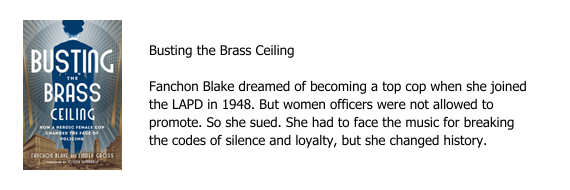Writing a memoir is not the same as writing your autobiography. This is not the all-inclusive story of your life, no matter how fascinating. A memoir has a specific theme, which is revealed to the reader through narrative prose that reads like fiction.
To write a good memoir, you first have to figure out why you want to write it. What’s the message? And what’s the pivotal time span or series of events in your life that brings that message to life?
When I helped Fanchon Blake rewrite her memoir about suing the LAPD for sex discrimination, we wound up cutting 100 pages that had to do with her being involuntarily recalled to the army and sent to Japan. The Japan material was fascinating, and it certainly took place during the years Fanchon was at the LAPD. But aside from the fact that being recalled forced her to take a leave from the police department, the pages about her Japan experience did not relate to the LAPD story. So they had to go.
Once you’ve honed your focus, you need to write the book dramatically. Remember, you’re taking your readers on a personal journey. Focus on the highlights (or lowlights) that show how you transitioned from Point A in your life to Point B and finally to Point C.
More memoir writing tips (which I call hints):
Hint #1: A this happened, then this happened and then this happened approach won’t serve you here. Each chapter has to build on the last, and has to have its own reason for being. That may provoke some rather difficult soul searching that can wind up making you feel like you’ve put yourself on your own very personal shrink’s couch. But until you figure out each chapter’s sub-theme and how it contributes to the main theme, you won’t be able to nail the dramatic purpose of that chapter.
Hint #2: Creating an outline can really help. So can writing sloppy letters to figure out what you’re trying to say, why you want to say it and the events that stand out in your mind.
Once you’ve figured out the arc of your book that takes the reader on that journey of transition, you’ll need to bring your scenes to life just like you would if you were writing fiction.
Hint #3: Go big on details. They will bring your material to life.
Hint #4: Dialog is your friend.
Hint #5: Think of this as story-showing instead of story-telling. You want your readers to experience what happened, as if they had been along for the ride. As if they were you.
For more writing a memoir tips, check out The Complete Idiot’s Guide® to Writing a Memoir by Victoria Costello, who’s also the author of the soon to be released A Lethal Inheritance: A Mother Uncovers the Science Behind Three Generations of Mental Illness, (Prometheus Books, 2012).



















0 Comments